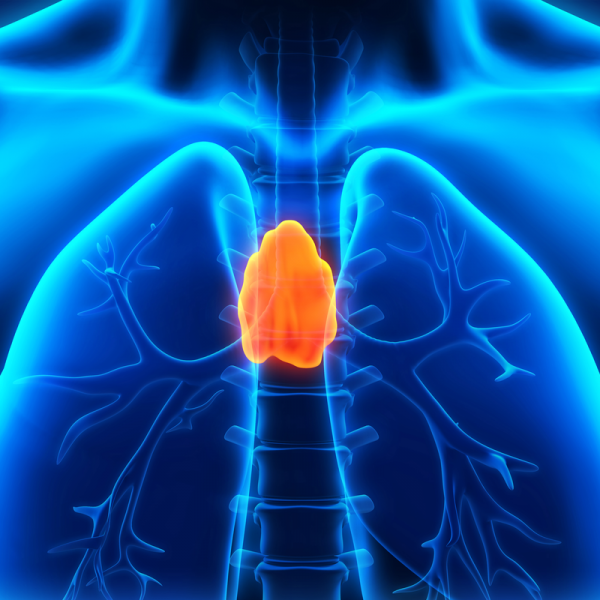
What is a thymic cyst?
A thymic cyst develops outside or inside the thymus gland (sweetbread), an important part of the immune system, which is located at the level of the pharynx and the anterior or posterior medistinum. Thymic cysts are either congenital or acquired during life. In most cases, a thymic cyst is asymptomatic and always benign. However, if the thymic cyst occurs in the anterior superior mediastinum, it can become very large and should be surgically removed.
What are the different forms of thymic cysts?
If the thymic cyst occurs in the middle mediastinum, it is predominantly a pericardial or pleuropericardial cyst or a bronchogenic cyst. Thymic cysts in the posterior mediastinum, on the other hand, are usually gastrointestinal cysts. However, a thymic cyst can also occur in the neck. Doctors then speak of a so-called cervical thymic cyst. This type of cyst is congenital and contains remnants of the duct that emerged from the embryonic development of the thymus gland.
What symptoms can a thymic cyst cause?
In many cases, the thymic cyst is asymptomatic. If symptoms do occur, they are rather unspecific and can be manifested by an unwanted loss of weight, general fatigue, fever, night sweats and tiredness. These rather unspecific symptoms should be clarified by a medical doctor, as other clinical pictures can also be hidden behind these general complaints.
A cervical thymus cyst in the neck usually occurs within the first ten years of life, and boys are more likely to develop it than girls. A cervical thymic cyst can manifest itself as an increasing but painless swelling in the neck area, often affecting the left side of the neck. Depending on the size and extent of the cyst, there may be pain in the neck area, discomfort when swallowing and even shortness of breath.
How is a thymic cyst diagnosed?
A thymic cyst can be made visible by the usual imaging methods. These include, for example, a computer (CT) or magnetic resonance imaging (MRI) scan and an X-ray of the thorax. In addition, a fine needle aspiration can be done to take cells for a biopsy and confirm the initial suspicion of a thymic cyst.
How is a thymic cyst treated?
Even if the thymic cyst does not cause any symptoms, the cyst is usually removed completely within a surgical procedure. The main reason for this is that a thymic cyst grows steadily and takes up space accordingly. This is even more true if the thymic cyst has appeared in a child. This is because the formation of the thymus gland is the prerequisite for the development of an intact immune system.
| Pathogen | Source | Members - Area |
|---|---|---|
| Thymus cyst | EDTFL | As a NLS member you have direct access to these frequency lists |
